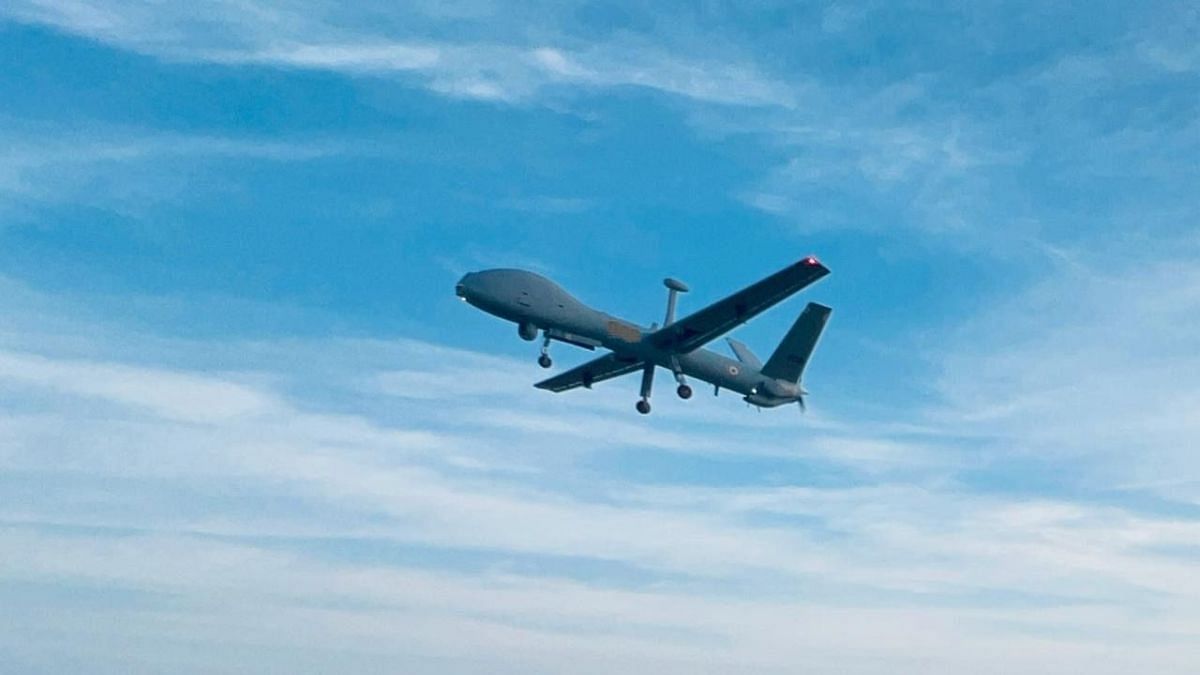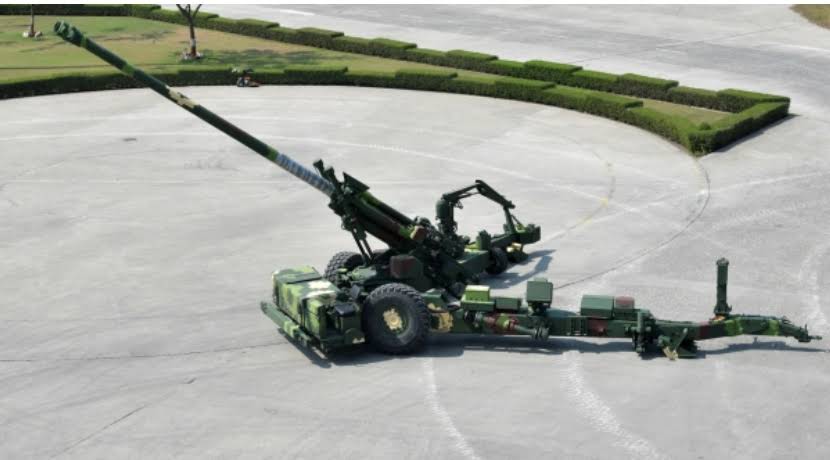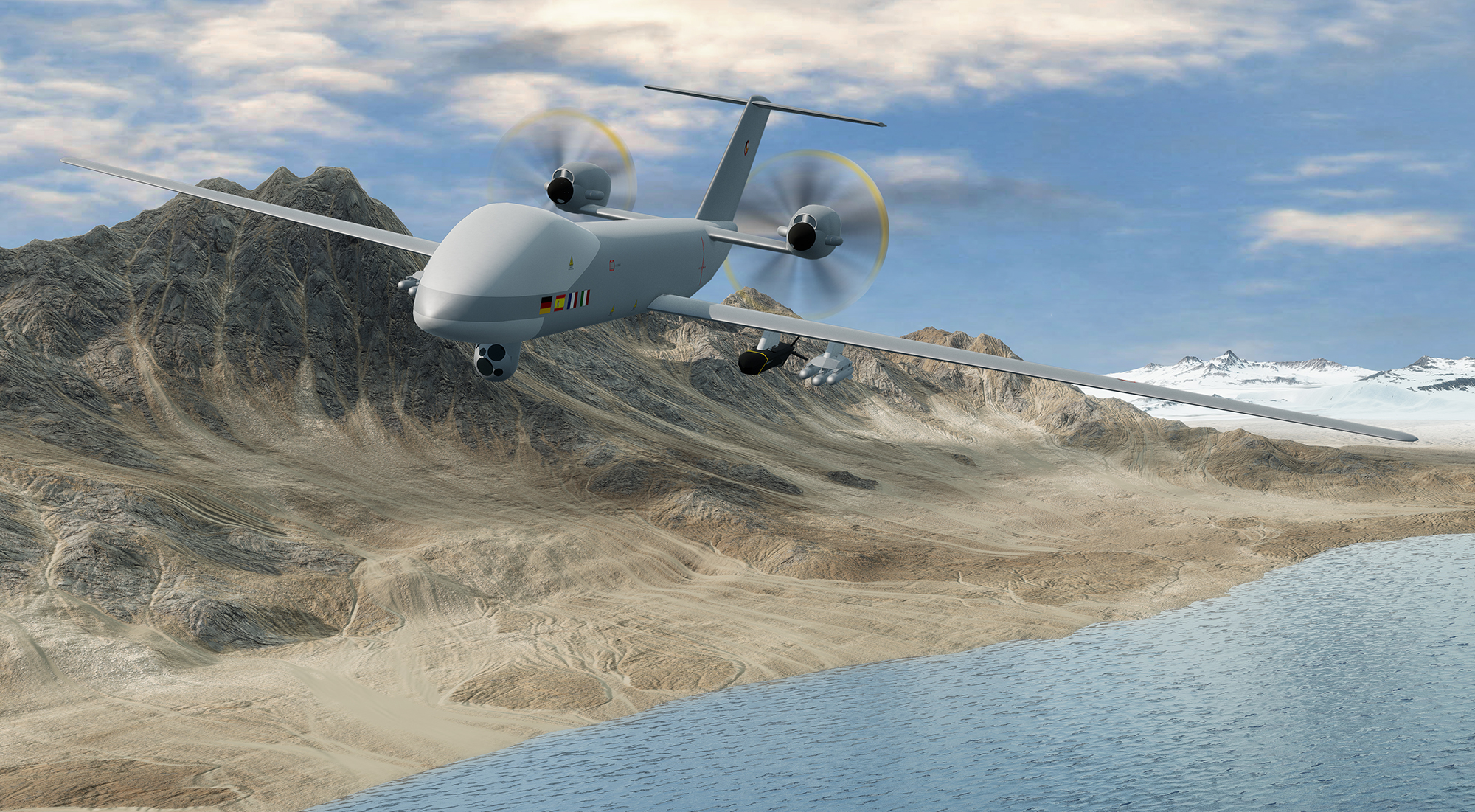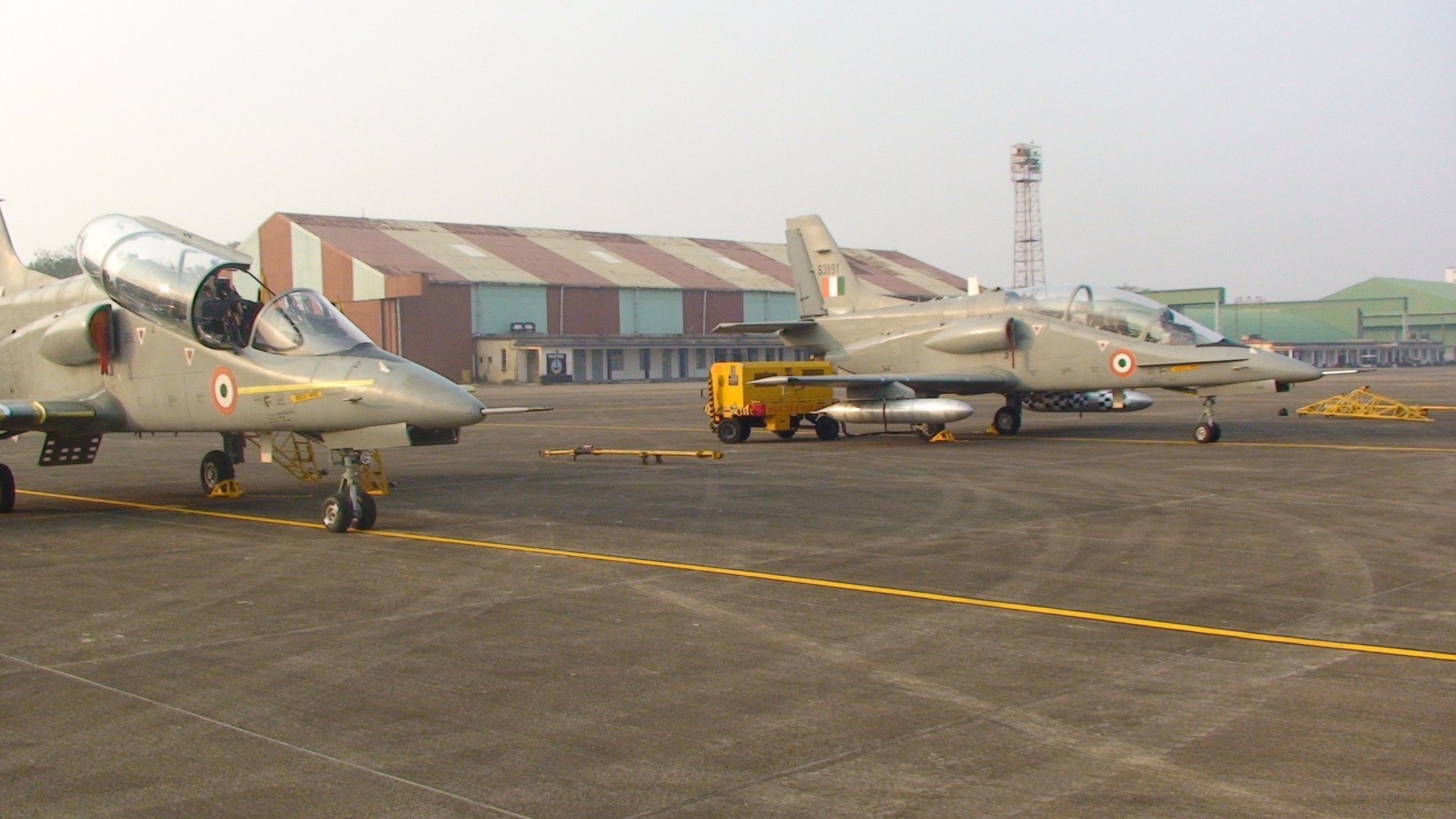Monthly Archives: January 2025
SOURCE: AFI


The Indian Navy and Army’s decision to procure the Drishti 10 Starliner unmanned aerial vehicles (UAVs) without comprehensive trials has recently come under scrutiny, particularly in light of a costly crash incident involving one of these drones. This situation has raised questions about the decision-making processes within India’s military procurement system, casting a shadow over the operational readiness and strategic planning of the armed forces.
The Drishti 10 Starliner, developed by Adani Defence and Aerospace in collaboration with Israeli firm Elbit Systems, is a variant of the Hermes 900. It was intended to bolster the surveillance and reconnaissance capabilities of the Indian Navy and Army. The decision to purchase these drones was made with urgency, invoking emergency procurement powers to expedite the process.
Continue readingSOURCE: AFI

A recent audit conducted by the Comptroller and Auditor General (CAG) of India, covering the fiscal years 2018-19 to 2020-21, has shed light on significant water supply issues within military installations managed by Garrison Engineers (GEs). The findings indicate a systemic failure in ensuring adequate water provision to defence personnel, which could impact operational readiness and welfare.
According to the CAG report, an astonishing 15 out of the 20 Garrison Engineers (GEs) under scrutiny provided less water than what was officially authorized to military stations across the country. The discrepancies in water supply were stark, with deficits ranging from a relatively manageable 10.13% to a concerning 62.97% below the prescribed levels. This shortfall raises questions about the maintenance of health, hygiene, and operational efficiency within these critical defence areas.
Continue readingSOURCE: AFI


In a groundbreaking advancement for aquaculture, the Ocean Electronics group of the National Institute of Ocean Technology (NIOT) has successfully conducted sea trials of an innovative feeding system designed for use in open-sea, submerged fish cages. This pioneering technology, which operates at a depth of 10 meters in rough sea conditions, represents a significant leap forward from existing systems, which are limited to shallower depths.
The system developed by NIOT leverages a water ejector mechanism to dispense fish feed, marking the first time such technology has been effectively tested at these depths worldwide. Unlike the systems by AKVA-USA, which have only been operational at depths of 4-5 meters, NIOT’s solution pushes the boundary to 10 meters. This advancement is crucial for aquaculture in regions prone to harsh weather conditions, where traditional surface-level feeding can be disrupted.
Continue readingSOURCE: RAUNAK KUNDE / NEWS BEAT / IDRW.ORG


Bangalore-based aerospace company Q-Alpha Aerospace is set to showcase a scaled-down model of its groundbreaking RHH-150 Air-Breathing Variable-Range Multi-Role Agile Hypersonic SWARM UCAV at the upcoming Aero India 2025 in Bengaluru. This unveiling marks a significant milestone in the evolution of unmanned combat aerial vehicles (UCAVs), highlighting advancements in hypersonic propulsion, SWARM capability, and multi-role versatility.
The RHH-150 represents the pinnacle of modern aerial combat technology. Designed for reconnaissance, strike, and support roles, it combines hypersonic speeds with unparalleled agility and advanced AI systems to deliver mission-critical capabilities across diverse operational scenarios.
Continue readingSOURCE: RAUNAK KUNDE / NEWS BEAT / IDRW.ORG


The L&T Nexter consortium has introduced the TRAJAN, a state-of-the-art 155mm/52cal towed howitzer, which is now a significant contender in the Indian Army’s Towed Gun System (TGS) tender. This development comes at a time when the Indian military is looking to bolster its artillery capabilities with modern, reliable, and locally manufactured systems.
TRAJAN is based on the renowned CAESAR ordnance, bringing to the table the combat-proven artillery technology currently used by the French Army and several other forces globally. This howitzer has undergone rigorous evaluation by the Indian Army, involving extensive firing and mobility trials across various terrains and under diverse climatic conditions. The system has been tested for its ability to deliver enhanced firepower, showcasing quicker response times, longer range, and improved accuracy, which are critical in modern warfare scenarios.
Continue readingSOURCE: RAUNAK KUNDE / NEWS BEAT / IDRW.ORG


In a significant modernization push, the Indian Army has started replacing its long-serving Dragunov sniper rifles with the more advanced Sako TRG 42, chambered in .338 Lapua Magnum. This transition marks a strategic upgrade in the Army’s sniper capabilities, aiming to enhance precision, range, and effectiveness in various operational theaters.
The Dragunov SVD, a semi-automatic rifle of Soviet origin, has been a mainstay of the Indian Army’s sniper units since its induction in the mid-1980s. Known for its reliability and ease of use, it has served through numerous conflicts, providing Indian snipers with a dependable weapon. However, with evolving combat scenarios and the need for greater accuracy and range, the Indian Army has decided to move towards the Sako TRG 42.
Continue readingSOURCE: AFI


In a significant development that underscores India’s growing interest in fostering defense ties with Europe, Airbus has welcomed India as an observer to the Eurodrone programme. This move, facilitated by the Organisation for Joint Armament Cooperation (OCCAR), signals India’s intent to explore potential collaboration with Europe in advanced defense technology projects. The development was first reported by IDRW.org.
India’s observer status in the Eurodrone programme, facilitated by the Organisation for Joint Armament Cooperation (OCCAR), signifies a step towards potentially deeper collaboration. This role allows India to monitor the project’s progress, understand its technologies, and assess possible areas for future partnership.
Continue readingSOURCE: AFI


In a move that could significantly reshape India’s defense capabilities, President Donald Trump is reportedly considering elevating India’s status to be on par with NATO country members for the procurement of American weapons, according to defense analyst Ramesh Rajan. This elevation would potentially allow India to access top-tier U.S. military hardware without the stringent scrutiny that has previously characterized such transactions.
If Trump follows through with this policy, India would enjoy the same privileges in arms procurement as NATO allies, which could bypass many of the bureaucratic hurdles and licensing delays currently in place. Rajan suggests this could open doors for India to procure high-end, cutting-edge weapons directly from the United States, rather than settling for export variants which often come with less advanced technology or features.
Continue readingSOURCE: AFI


In an exciting development for the defense sector, Armory, a burgeoning defense technology startup, is set to showcase its latest innovation, the SURGE, at an upcoming defense technology expo. This new system represents Armory’s foray into counter-drone technology, specifically designed to mitigate threats posed by unauthorized drones in sensitive areas.
SURGE, developed entirely in-house by Armory’s team of engineers and defense technology experts, promises to be a significant addition to the arsenal of counter-unmanned aerial system (C-UAS) solutions. This drone jammer is engineered to detect, track, and neutralize rogue drones efficiently, offering a blend of advanced detection capabilities and precise signal disruption.
Continue readingSOURCE: AFI


In a significant stride towards technological advancement, the Indian Army (IA) is in the process of transitioning from traditional pack mules to AI-powered robotic counterparts. This shift, highlighted by the display of the new Multi-Utility Legged Equipment (MULE) robots at the Army Day Parade in Pune on January 15, marks a pivotal moment in the Army’s modernization efforts, particularly in logistics within inhospitable terrains like the Himalayas.
For nearly two centuries, mules have been the unsung heroes of the Indian military, shouldering the burden of logistical support in some of the world’s most challenging environments. From the battlefields of the two World Wars to the dense jungles of the Burma campaign, these animals have been instrumental in delivering supplies where human effort alone would falter. The current 4,000-strong contingent of pack mules has been a testament to their indispensable role in military logistics.
Continue readingSOURCE: IDRW.ORG


Hindustan Aeronautics Limited (HAL) is set to bring back its HJT-36 intermediate jet trainer (IJT), also known as Sitara, for a flying display at the upcoming Aero India 2025 in Bengaluru. This marks a significant comeback for the subsonic trainer, which has been absent from the event for over a decade following technical challenges and developmental delays.
The HJT-36’s appearance at Aero India has been rough for the program, as in 2007, an airshow incident marred its performance. The aircraft veered off the runway after its canopy unlocked during the take-off run, raising concerns about its operational readiness. Subsequently, HAL withdrew the Sitara from Aero India in 2009 due to technical snags, leading to a prolonged hiatus in public demonstrations of the jet.
Continue readingSOURCE: IDRW.ORG


Bangalore-based aerospace company Q-Alpha Aerospace has announced its work on the development of the QAL-J10, a cutting-edge multi-stage AI-augmented 10 kN turbojet engine. This engine is designed to revolutionize propulsion systems for unmanned combat aerial vehicles (UCAVs) and drones, while also paving the way for future hypersonic applications.
The QAL-J10 turbojet engine features an afterburner and exhaust choking system, designed with high precision using advanced scientific and mathematical models. According to Q-Alpha Aerospace, the engine has been specifically engineered for compatibility with TBCC (Turbine-Based Combined Cycle) architecture, making it a potential candidate for hypersonic UCAVs in the future.
Continue readingSOURCE: AFI


In a significant stride towards self-reliant defense capabilities, the Solar Group, through its subsidiary Economic Explosives Ltd (EEL), has successfully tested a new counter-drone system named Bhargavastra. This innovative micro-missile-based system, designed to neutralize the threat of unmanned aerial vehicles (UAVs) and drone swarms, might just be India’s answer to the much-acclaimed Iron Dome of Israel.
Bhargavastra can detect small incoming drones from over 6 kilometers away and neutralize them with guided micro-munitions. This capability is crucial in an era where drones, both commercial and militarized, pose significant security risks.
Continue readingSOURCE: AFI


In a strategic move to enhance its maritime surveillance and reconnaissance capabilities, the Indian Navy has expressed a keen interest in procuring additional Medium Altitude Long Endurance (MALE) Unmanned Aerial Vehicles (UAVs), emphasizing the need for locally developed solutions. This push comes as the Navy looks to reduce the operational burden on its Boeing P-8I Poseidon fleet, which has been pivotal in monitoring the vast expanse of the Indian Ocean Region (IOR).
The Navy’s desire for MALE UAVs stems from a need for sustained surveillance over large maritime areas without over-relying on its P8I aircraft, which, while highly capable, come with significant operational costs and maintenance demands.
Continue readingSOURCE: AFI


The Indian Navy has been identified as a key driver behind the development of the Long-Range Anti-Ship Missile (LRAShM) by the Defence Research and Development Organisation (DRDO). While the LRAShM was initially conceived for coastal defense, its massive size and weight have rendered it incompatible with integration on the Navy’s frontline warships. However, this limitation has not diminished its strategic value; instead, it has led to a unique deployment strategy aimed at enhancing coastal security and deterrence.
The missile employs a hybrid propulsion system, combining rocket boosters for initial launch with a scramjet engine for sustained hypersonic flight. This technology allows LRAShM to travel at speeds exceeding Mach 5, making it incredibly difficult for enemy defenses to counter.
Continue reading